If your AC isn’t working correctly, it’s time to troubleshoot. We’ll walk you through the process so you can get back to feeling better—faster.
When it’s a warm, blue-sky day and your AC is not cooling correctly, that takes all the fun out of sunny weather.
Not to mention, a broken AC can cause excess humidity in your house and indoor air quality issues. No good.
In this guide, you’ll walk through the steps needed to troubleshoot an AC that isn’t working correctly and get to the root of the problem—fast.
Plus, if your AC isn’t doing it’s job, depending on where you live, you could get a super-efficient HVAC system replacement or temperature-fixing insulation upgrades at zero upfront cost… eligible rebates included. Tap here to see if you qualify.
Use this quick index to jump ahead to what you need for today (because there’s no time to waste when you’re dealing with a stuffy house.)
- AC not working? Here’s what to check first if your AC isn’t kicking on
- AC running but not cooling? Here’s what you need to do next, step by step
- Answered: Why is my air conditioner blowing cold air but not cooling the house?
- How to get a customized fix for your too-hot house at no upfront cost
- FAQs for when your AC isn’t working
AC not working? Here’s what to check first
Okay, so you’ve noticed the problem (how could you not?): Your AC is on the fritz, and maybe it’s completely stopped working.
(If your AC is still running but not cooling your house, you’ve got a different set of issues. Tap here to jump ahead to the next section.)
When the AC isn’t kicking on at all—and was working just fine yesterday—there are a few things to do first:
- Check your thermostat
- Take a look at your home’s circuit breaker
- See if your AC has any airflow obstructions
We’ll walk you through each of these steps.
1. Check your thermostat
When your AC stops working and won’t turn on, sometimes it’s a simple fix: Your thermostat may be on the wrong setting or needs a new set of batteries.
That’s why it’s important to start troubleshooting here. Basically, your thermostat is your AC’s control center.
If your AC won’t turn on at all, it can be a thermostat battery or wiring issue. To double-check, try setting your thermostat to “Cool” and then the lowest temperature possible to jumpstart your air conditioner.
If nothing happens—even after you install a set of fresh batteries (if your thermostat uses batteries)—it’s time to check your circuit breaker.
2. Take a look at your circuit breaker
So if it’s not your thermostat preventing your AC from kicking on, locate your circuit breaker next (also sometimes called your breaker box or breaker panel).
Your central AC system usually requires two separate breaker switches for the indoor and outdoor parts of your home AC.
Make sure both the circuit breakers for your system weren’t tripped. (If they were, this is an easy fix! Simply turn the switches back on.)
3. See if your AC has any airflow obstructions
If your AC’s breaker switches are in the correct operating positions, you should check both your indoor air filter and the outdoor AC condenser unit for blockage next.
Your AC’s filter should be replaced every 90 days at least, and if you haven’t replaced your air filter in some time, do so now. (Most hardware and grocery stores carry air filters.)
After you check your air filter, take a look at your outdoor condenser. The condenser coils (the corrugated metal strands on your outdoor unit) can get blocked by dirt, debris, leaves, and even seeds and pollen. Find out how to clean AC coils properly here.
Have landscaping near your outdoor unit? Make sure the plants in your garden aren’t brushing up against or blocking the condenser’s airflow. (If they are, grab a pair of pruners and snip away any greenery in the way.)
Didn’t work? Here’s what to do next
If you tried all the above and your AC still won’t turn on, it’s time to call in the pros.
When your AC is not kicking on at all, it often is due to an electrical issue—it’s likely your AC isn’t getting the electrical current it needs to operate.
An HVAC technician is trained to look for the following:
- Electrical component problems. Your central AC system could have an issue with its capacitor, contactor, or the electrical connection cables could be damaged or faulty.
- Condenser fan issues. If it isn’t an electrical connection problem, perhaps your condenser fan has called it quits. If so, this could keep the entire system from starting properly.
For more insight, read When to replace your AC or Here’s when to replace your HVAC system.
AC not cooling? Here’s what you need to do
If you’ve made it this far in the article, it’s likely your AC is running but not cooling your house.
This is a different problem altogether.
Something’s not right, but what?
Check out this guide if your air conditioner is not blowing cold air at all but is still running. (It will help troubleshoot your specific AC issue step by step).
Here, we’re specifically going to walk you through what to do when your AC isn’t working the way that it should: Essentially, it’s not cooling your home correctly, even though it is running and possibly still blowing cool air out of your vents.
This is a bigger issue. (But we don’t have to tell you that. That’s why you’ve found yourself here in the first place.)
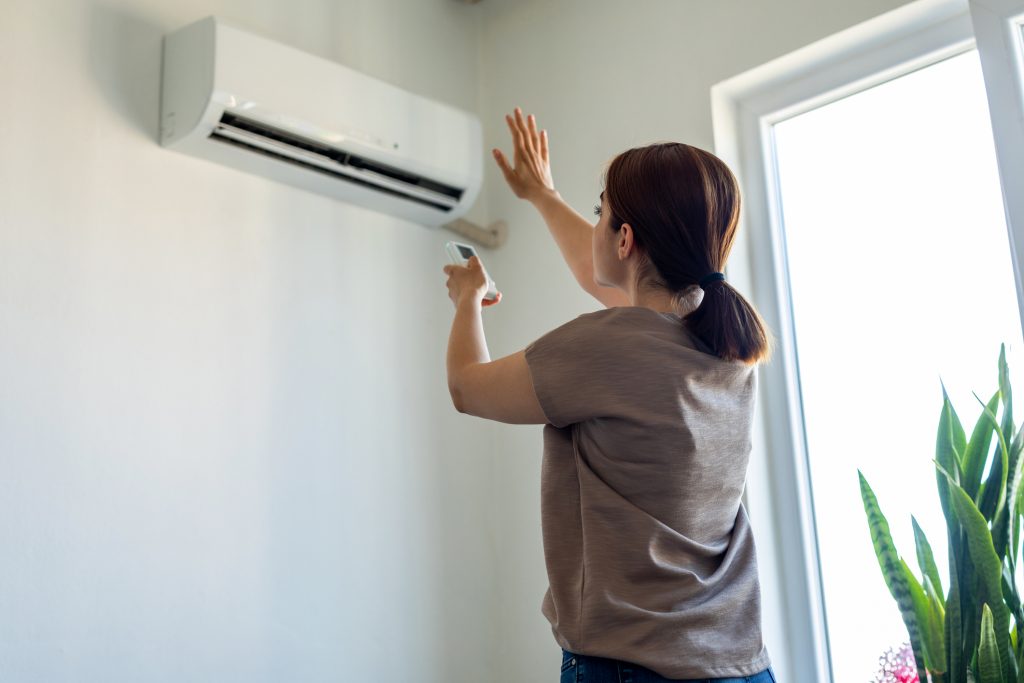
Why is my air conditioner blowing cold air but not cooling the house?
Your ac not cooling your house correctly could be caused by a few things, including:
- Insufficient insulation and air leaks in your house
- A worn-out AC system that needs replacing
- A thermostat that needs recalibration
- Clogged or blocked AC coils
- Ductwork problems
We’re going to dig into each one below.
But know this: If your house has uneven, too-hot temperatures, Sealed can help you fix it at $0 upfront cost—eligible rebates included—if your house qualifies. Tap here to find out.
First, before we start troubleshooting, you need to do a quick safety check.
You need to inspect your air conditioner for unusual sounds or smells.
Odd smells or sounds—paired with an AC that’s running but not cooling—could mean you have a refrigerant leak (aka a Freon leak).
Freon leaks can lead to refrigerant poisoning and be a hazard to your health, so it’s essential to check out any strange sounds or smells coming from your central AC immediately.
Here are a few signs of a refrigerant leak:
- Your AC unit is making a slight high-pitched hissing or bubbling sound
- Your central air is running but warm or room temperature air is coming out of the vents
- You smell a sweet scent coming from your vents that’s similar to fingernail polish remover, chloroform, or chemicals.
It’s important to note that sometimes your AC can produce a sweet, mildew-like smell if your air ducts or AC drain pipe need cleaning. (Ask our writers how they discovered this one.)
If your air conditioning system has any of the symptoms above—or simply is pretty smelly and hasn’t been before—it’s time to turn it off and call a trusted HVAC pro for inspection.
And if you suspect a refrigerant leak?
Safety first. Evacuate your house and call an expert for help.
Now that you’ve gotten your safety check out of the way, let’s talk through what might be going on when your AC is running but not cooling effectively.
Insufficient insulation and air leaks are keeping your AC from being able to cool your home
If your AC is not cooling your home (but is still blowing cool air through the vents), one of the primary culprits is that your house has insufficient insulation and air leaks.
Faulty insulation and air leaks are one of the biggest causes of your home being able to stay cool in the summer. (And not just your house, but most houses in the U.S.)
Home air leaks account for 25—40% of the energy used to heat and cool a home. (Wow—that’s a lot of energy waste.)
EnergyStar.gov
If your home has never been properly air sealed, the cool air you pay for in the summer can (and does) escape through open seams, gaps, and holes in your:
- Foundation
- Attic
- Light fixtures
- Fireplace
- Windows and doors
- Plumbing and electrical components
And summer heat can get into your house via these same air leaks. Learn how to find air leaks in your house here.
And without sufficient insulation—especially attic insulation, foundation insulation, and garage insulation (if your garage is attached)—heat radiates directly into your house.
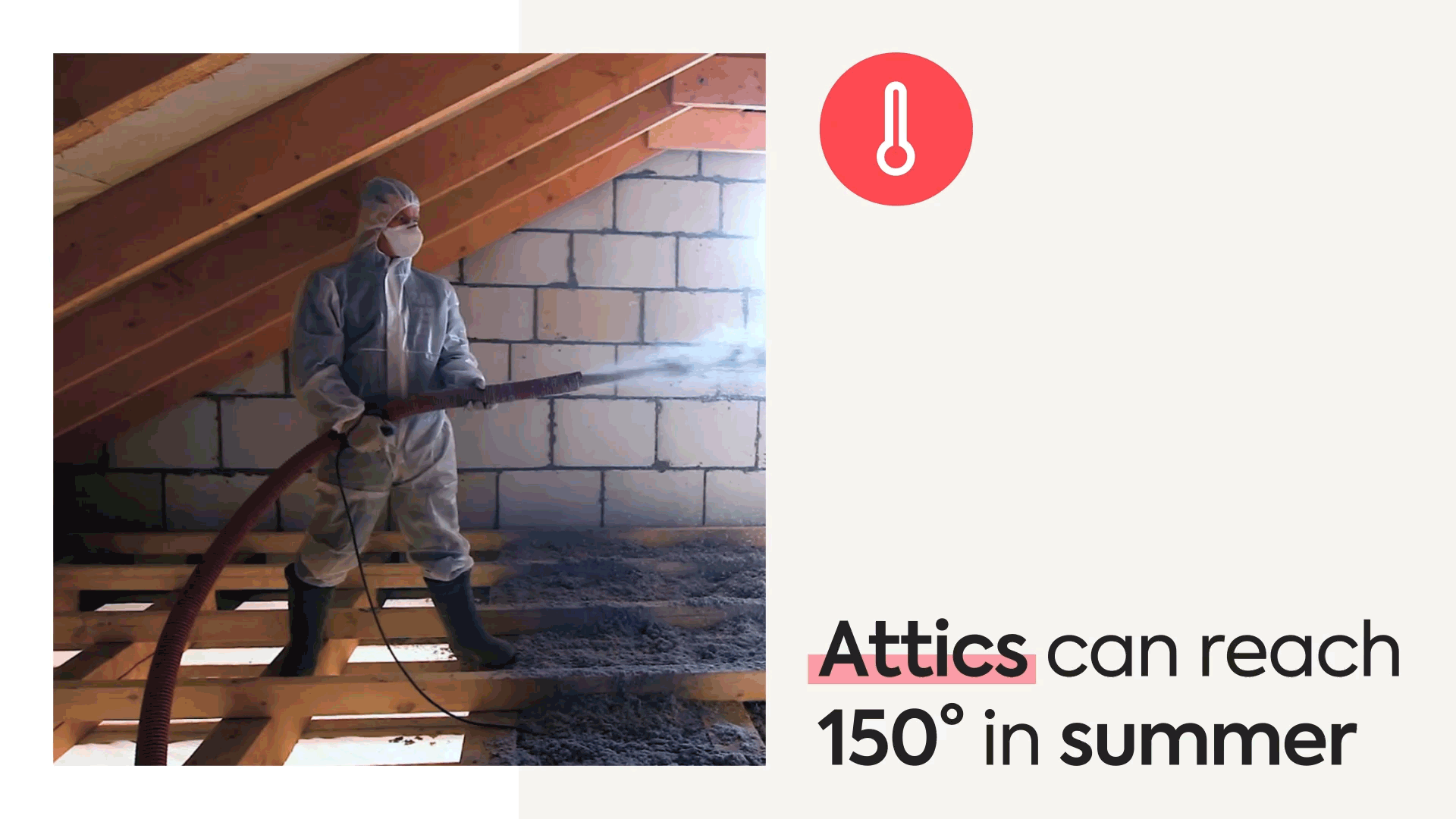
Here are a few ways to tell if your home has insufficient insulation:
- You can see joists peeking above the insulation in your attic
- Your current insulation is crumbling, peeling, or has discoloration
- You have uninsulated attic spaces or an uninsulated attached garage
- You remove an outlet or wall switch cover and are unable to see insulation in the walls
- Your floors are cold in the winter
- You have the classic hot upstairs, cold downstairs problem
- You have uneven temperatures and drafts between rooms
Air sealing and insulation work together to keep the air you pay to heat and cool inside and block outdoor air out. (They also help improve indoor air quality and keep your AC from being overworked.)
So if your AC is running all the time and sufficiently blowing cold air—but still not cooling your home properly—it’s likely heat is radiating into your house and insulation and air sealing is part of the fix.
If heat is radiating into your house and keeping you up at night, insulation and air sealing is part of the fix.
You have a worn-out AC system that needs replacing
If your central air conditioning system isn’t working correctly and it’s approaching its teen years, it’s time to get ready to replace it.
An important note here: Even if you have a newer HVAC system, it will likely have a shorter lifespan right out the gate if your house hasn’t been insulated or air sealed properly.
That’s just the truth. Your HVAC system has to work extra hard year round to keep you comfortable when your house is consistently losing air you’re paying good money to heat and cool.
In fact, if your AC isn’t cooling and is starting to act up and require more repairs and maintenance than usual, that’s a sign it’s time to start saving money toward a new HVAC system.
(And might we suggest the best, most energy-efficient HVAC system out there: the heat pump.
We like to call it the Tesla of HVAC. It makes your home feel amazing. It’s a cooling and heating system in one appliance, and you can get one at no upfront cost through Sealed if your house qualifies.)
Your thermostat needs recalibration
If your AC isn’t cooling properly and you have already checked your thermostat batteries and wiring (discussed at the top of this guide), it could be a thermostat calibration issue.
When your thermostat was first installed, it should have been calibrated to reflect correct temperature readings.
However, if your AC is having trouble cooling your home to the right temperature (but it’s still blowing cold air), it might need a refresh.
To recalibrate your thermostat:
- Tape an accurate thermometer up on the wall (a non-digital glass model is best) right next to your thermostat.
- Wait about 15 to 30 minutes, and then check if your thermostat and thermometer are showing the same temperature.
- If the thermometer and thermostat have different temperature readings, recalibrate your thermostat according to the manufacturer’s directions.
And if your thermostat has seen its final days and cannot correctly calibrate, we suggest upgrading to a smart thermostat, which can cut energy waste by 10–15% (1).
Your AC has clogged or blocked coils
Another reason your AC is running but not cooling? It has clogged or blocked coils.
Air conditioning systems usually have two types of coils:
- Evaporator coils: They’re where the cold air comes from.
- Condenser coils: They’re located outside and release heat from your house back outdoors.
Sometimes, these coils get clogged, freeze up, or are blocked by dirt and debris. You can clean your AC coils yourself, but replacing them is a job best left to the pros.
In either case, it’s best to call an HVAC technician to determine the root cause of clogged or blocked AC coils.
Tap here to read Does homeowners insurance cover AC?
You might have ductwork problems
And lastly, if your AC isn’t cooling your house—but continues to run and blow cooled air out of some vents—it could be your ductwork.
Air has a long way to travel throughout your home, and ductwork provides a route for that air to make it to all the right spots in your house. But over time, ductwork can shift, rust, and separate.
About 20–30% of the air that moves through your home’s duct system is lost due to leaks, holes, and poorly connected ducts.
EnergyStar.gov
This leads to gaps, holes, and open seams in your ductwork that will leak out cooled air and cause rooms to be unevenly cooled.
In fact, duct leaks can be responsible for about 20–30% of your home’s cool air loss (2).
And that’s something that duct tape alone can’t solve.
Here’s some good news: Similar to air leaks in your home, leaks in your ductwork can also be repaired and sealed. (And you might have guessed it already, but we can help you do just that.)
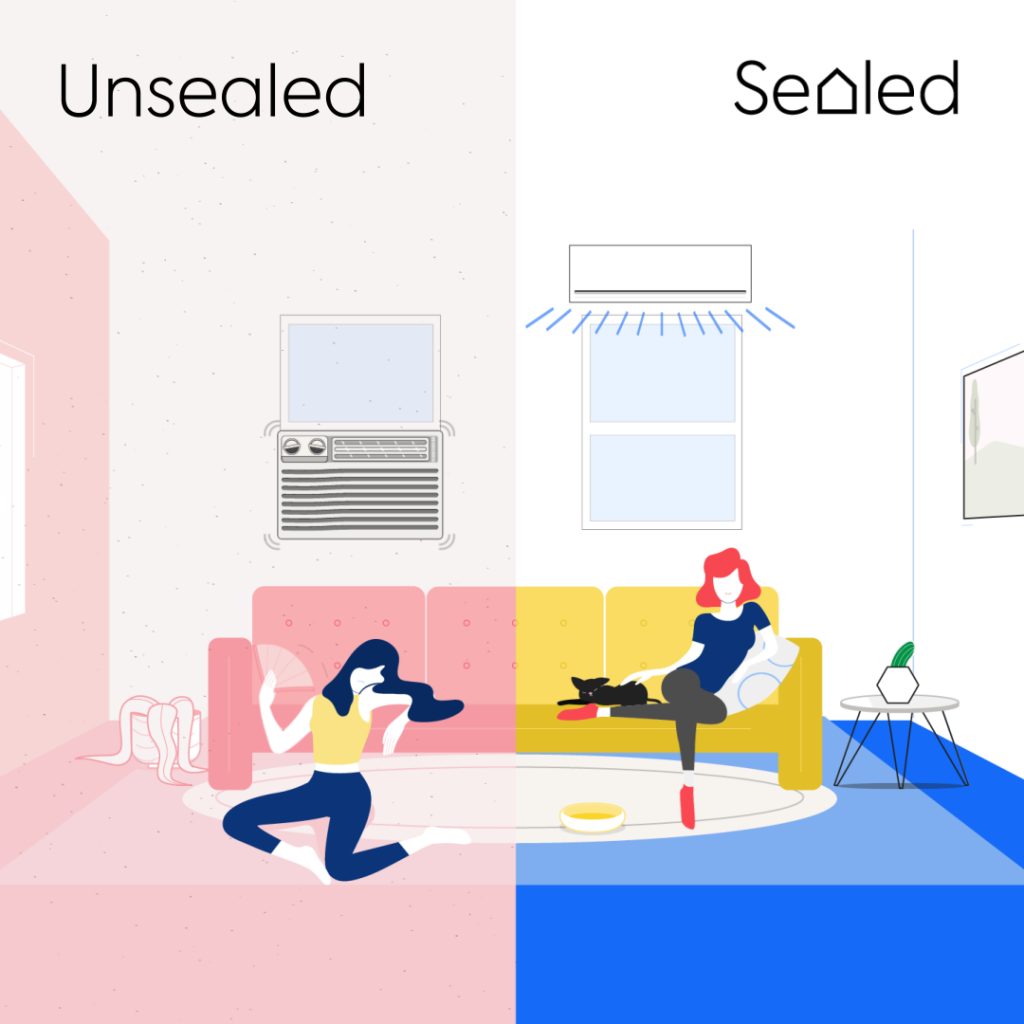
AC not cooling—still? Get a custom fix at no upfront cost
Sick of your AC not working correctly when you need it most? So are we.
A malfunctioning central AC system not only makes your home feel uncomfortable, but it’s also bad for your indoor air quality and wastes tons of energy.
But wouldn’t it be incredible to get the best, most-efficient heating and cooling system out there… will an energy-savings guarantee?
At Sealed, we help you do just that.
We’re on a mission to make homes more comfortable, energy efficient, and healthier for you and the planet. You can get comfort and energy upgrades at no (or very little) upfront cost if your home qualifies to work with Sealed.
And you’ll pay us back for the work done with a flexible payment option that works best for you and your budget. (Sounds too good to be true? It’s not.)
See if your home qualifies for a top-of-the-line heat pump HVAC heating and cooling system… and make your home (finally) feel amazing to live in again.
FAQs for when your AC isn’t working
Check out the answers to some of the most popular questions about air conditioners that aren’t working or cooling properly.
Use the list below to jump ahead to what you need today.
- Should you turn off the AC if it’s not cooling?
- How do you know if your AC needs Freon or refrigerant?
- Can I add Freon to my AC unit myself?
- What do I do when my ac is not cooling?
- Why is my house so hot even with AC on?
Don’t see your question here? Call us at 917-382-3729. We’re here to help!
Should you turn off the AC if it’s not cooling?
If your AC isn’t cooling (but is on and blowing warm air), it’s best to turn it off and take the time to troubleshoot what’s causing the problem.
Refrigerant leaks (also called Freon leaks) can cause an air conditioner to not cool properly and can be hazardous to your health or cause refrigerant poisoning. If you suspect a refrigerant leak—safety first: Evacuate your home and call an HVAC expert to inspect and repair the problem.
If your AC is running but not cooling your house—and still is blowing cool air—there’s likely another issue going on. Tap here to see our full troubleshooting list.
How do you know if your AC needs Freon or refrigerant?
It’s difficult to know if your air conditioner needs more refrigerant (sometimes referred to as Freon) without calling in a professional, but a few symptoms include:
- Room temperature or warm air blowing from the vents
- Icy or frozen condenser coils
- Strange noises, like hissing or bubbling, coming from your unit when it’s not kicked on
- An unexplained increase in your energy bills (outside of rising energy costs)
- You smell a chemical scent coming from your air vents
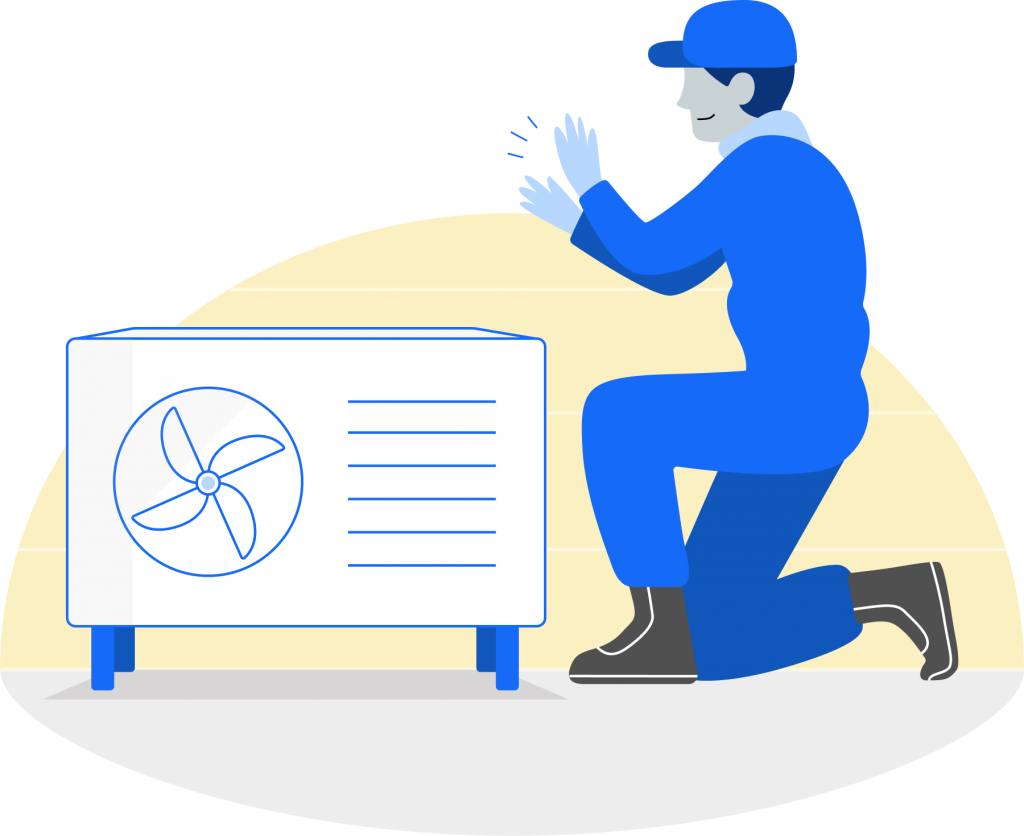
Can I add Freon to my AC unit myself?
Adding refrigerant (sometimes called “recharging an AC” or “adding Freon”) isn’t a DIY project. It requires an HVAC technician who’s trained in handling refrigerants safely.
Adding Freon also can be expensive and usually is a sign that your air conditioning system is close to replacement and is on its last leg—especially if your AC requires R-22 refrigerant, which is being phased out.
If you regularly need to recharge and add freon to your AC unit, it’s time to start shopping around for an upgrade.
Why? Air conditioners are pre-charged with the right amount of refrigerant for their entire lifespan (even window AC units), so if you’re running low or have a leak, it’s a significant issue.
Read on to learn if you should repair or replace the AC. (And if you know it’s time for an upgrade, we suggest the most energy-efficient HVAC system available: the mighty heat pump.)
What do I do when my ac is not cooling?
If your AC is not cooling, the first step is to troubleshoot. After you’ve walked through the basic AC troubleshooting steps above and your air conditioner still isn’t working correctly, it’s time to call an HVAC professional for assistance.
Why is my house so hot even with AC on?
If your house is hot and uncomfortable, but your AC is operating correctly, insufficient insulation and air leaks are usually the reason behind your AC being unable to cool your house.
If your air conditioner isn’t operating correctly, your AC and thermostat need a maintenance checkup and repair—or it’s time for a full-on AC replacement.
At Sealed, we can make your home feel better year round with high-performance insulation, professional air sealing, and energy-efficient heat pump HVAC upgrades… at no upfront cost if you qualify.
You pay us back for the work done with a flexible payment option that works best for you and your budget. If you don’t save energy, we take the hit.
See if your house qualifies today!
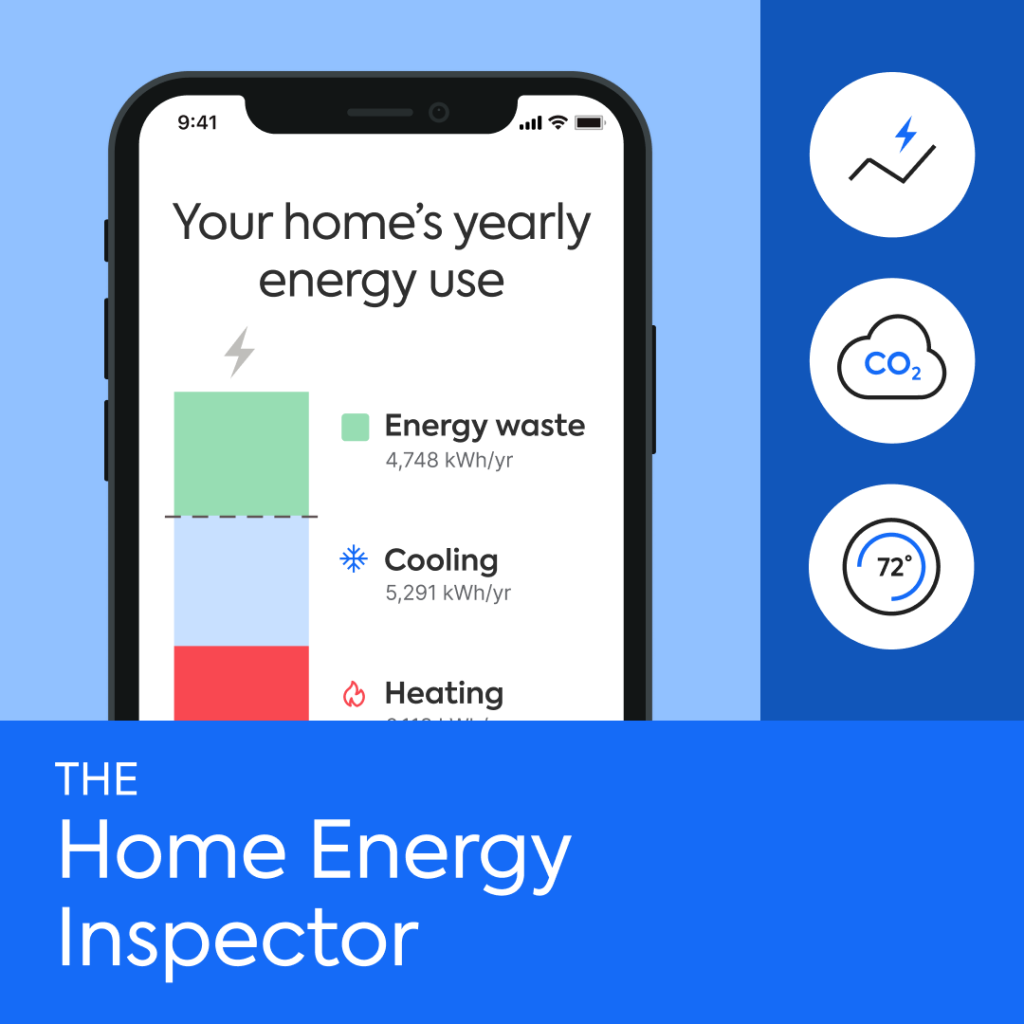
Ready to crunch the numbers?
Check out our home energy usage calculator to see where you could cut energy waste BIG TIME.